New town's artist upset after council loses his work in Glenrothes
- Published
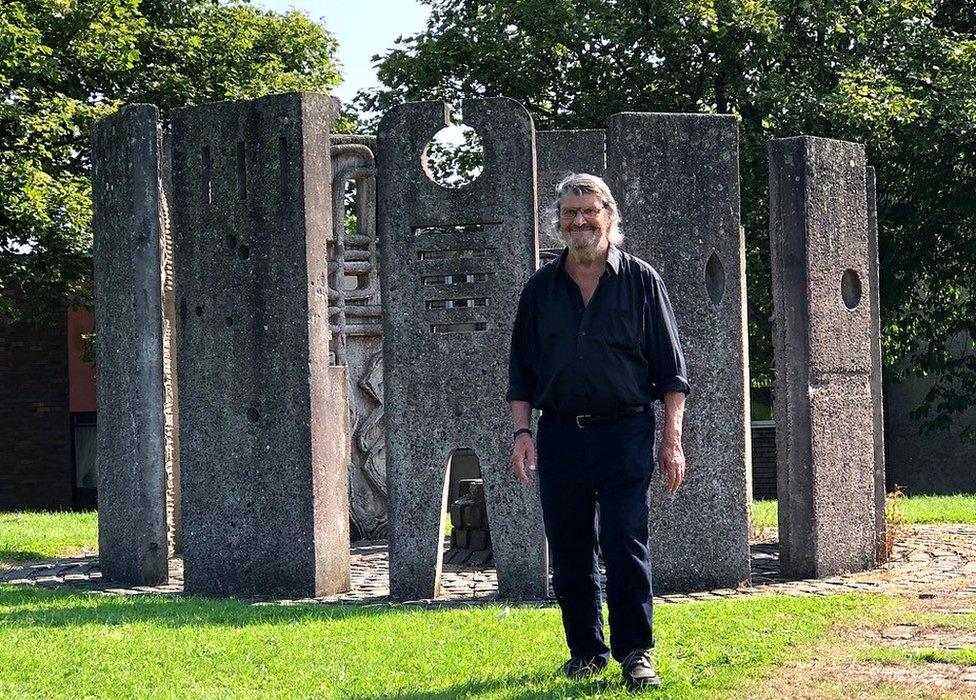
David Harding with one of his pieces called Henge
An acclaimed artist who created dozens of sculptures in a post-war Scottish new town says he is "very upset" that the council has lost some of his work.
David Harding, 86, said three poetry slabs had been dug up from the pavement in Glenrothes, Fife.
They went missing from the site of an old shopping centre, which has been fenced off as it awaits demolition.
Fife Council said their disappearance was "really disappointing" and that it did not know of their whereabouts.
Mr Harding was the town artist in Glenrothes for 10 years, starting in 1968.
The missing pieces had been in the precinct of the former Glenwood shopping centre. They featured poetry by Douglas Young, Hugh Macdiarmid and Sydney Goodsir Smith.
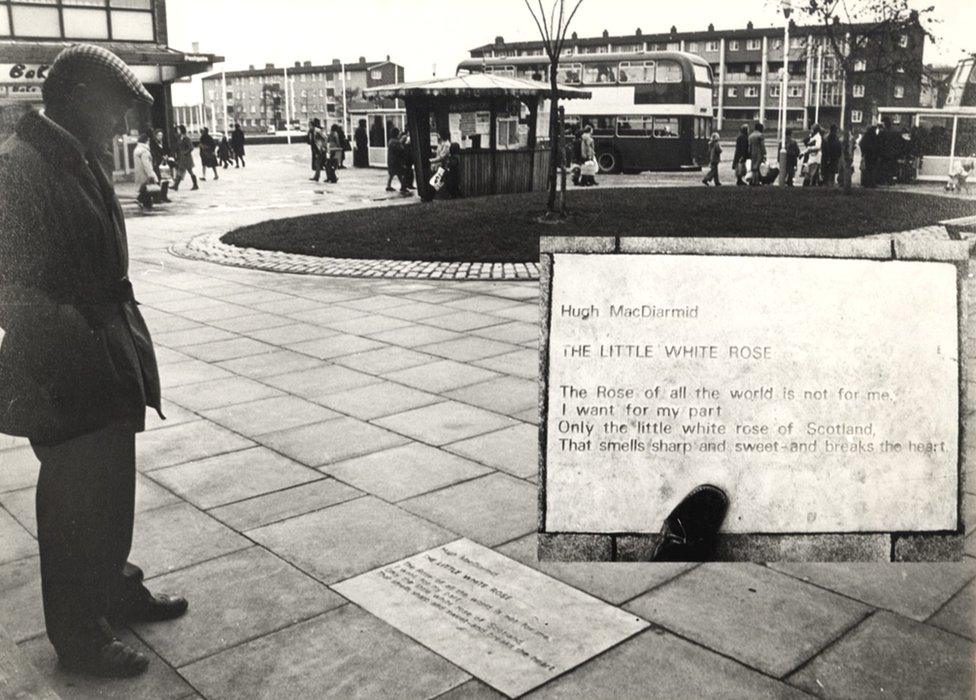
A passerby reading one of the poetry slabs which have now gone missing
Speaking from his home in Glasgow, Mr Harding told BBC Scotland that the works were one part of his legacy.
"I have about 30 or 40 pieces of art work in Glenrothes and I thought they would be there forever. I was doing it for posterity," he said.
"I am very proud of my work and I get tremendous satisfaction when I walk around Glenrothes and see them.
"So when I heard three poetry slabs had disappeared I was very sad."
He had created 10 poetry slabs at bus stops and phone boxes in the town, but he believes there is now only one left.
"I think it speaks volumes about the literacy of Glenrothes that they want to acquire pieces of poetry," he said.
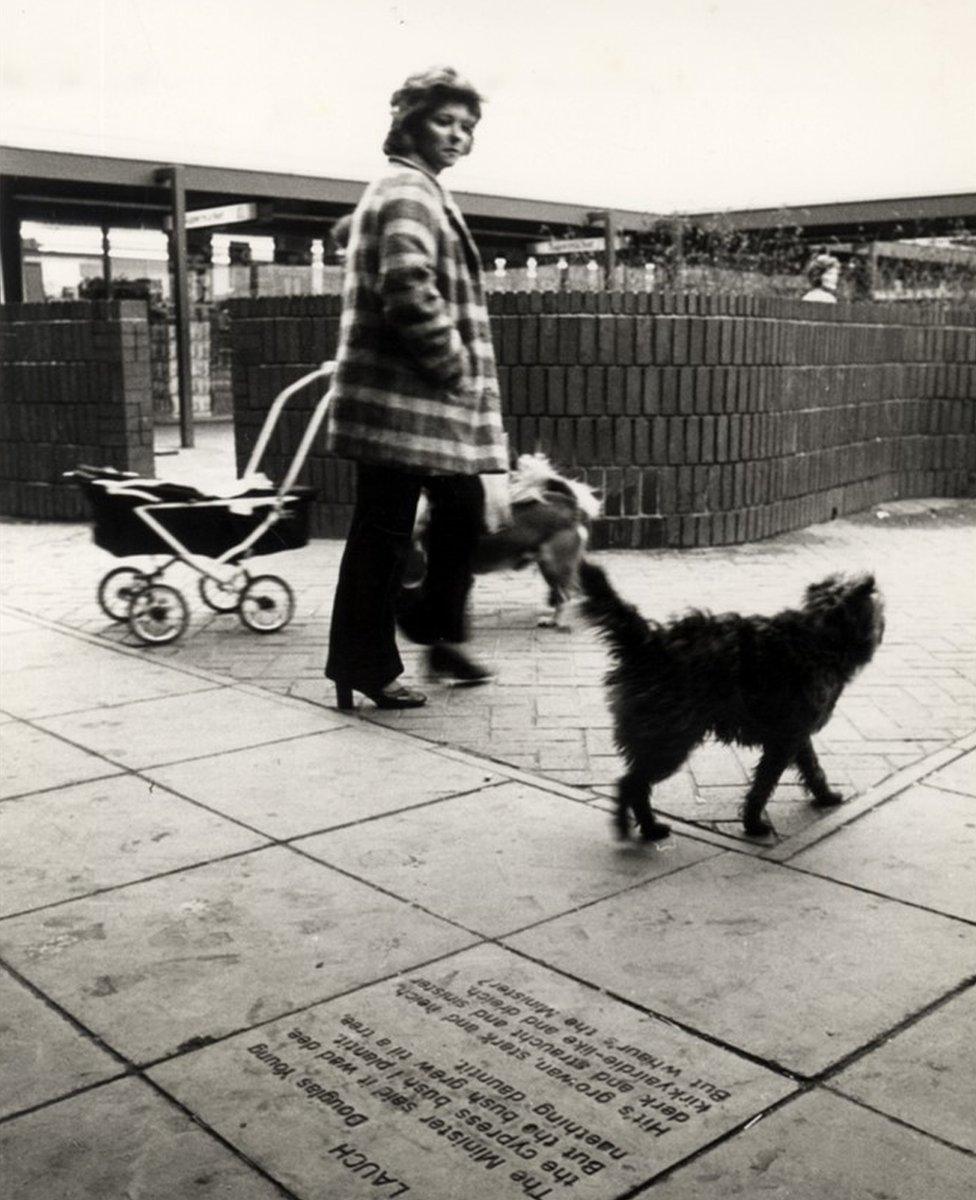
Mr Harding said that a few years ago some staff in Fife Council's parks and landscape department had started to break up his compositions.
"They put pieces here and there, despite the fact I had designed them very specifically for a specific place," he said.
"They decided to split them up. They took them from the neighbourhoods and put them on roundabouts and main roads.
"I think the council has a bit of a cavalier attitude and doesn't actually appreciate the full integrity of each work."
Mr Harding was brought up in in Leith and studied at the Edinburgh College of Art.
He worked as a teacher in Nigeria before returning to Scotland at the age of 30, where he was a self employed artist.
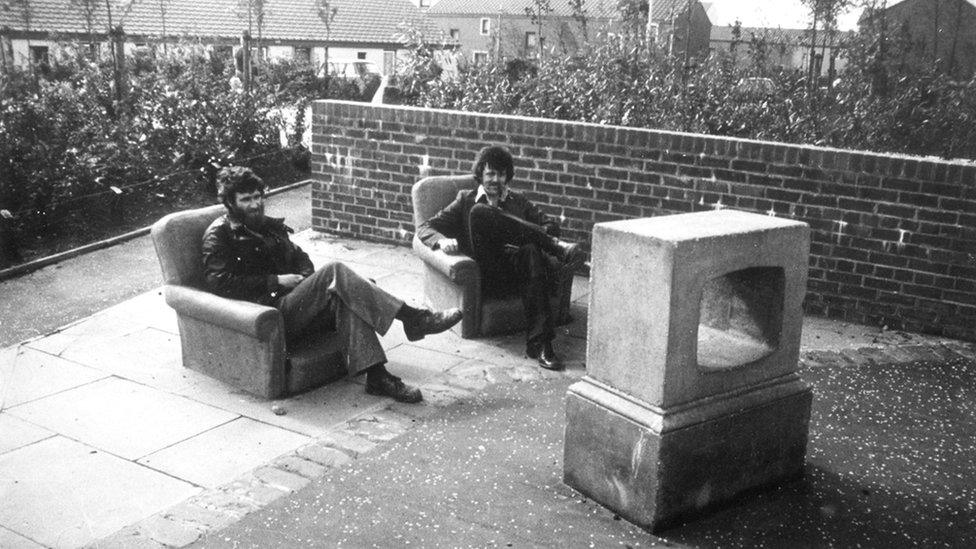
David's armchair and concrete TV sculpture in a Glenrothes street
He then answered a newspaper advert for the post of town artist with the Glenrothes Development Corporation, as the new town was taking shape in the east of Scotland.
The job involved creating a series of public art installations throughout Glenrothes, using the same building materials that were used to create local housing.
Two of the works he created are now listed - the Henge, a spiral of cast concrete slabs in Beaufort Drive; and a mural on an underpass called Industry, which he said was inspired by the the patterns he had seen on mud huts in Africa.
His other pieces included Heritage, rows of concrete embossed columns, and Dugs Cemetery.
Mr Harding went on to head a department at the Glasgow School of Art. He also has public art in Switzerland and Greece.
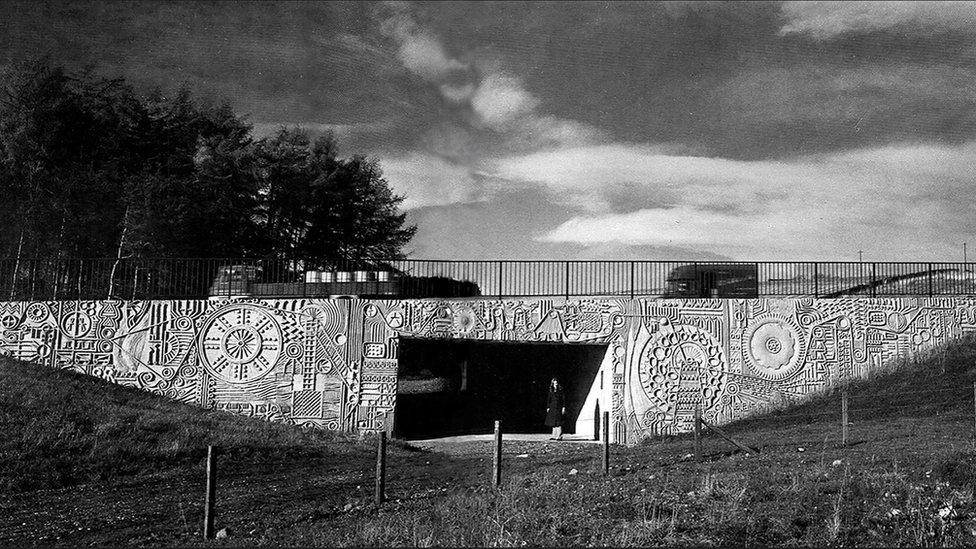
David was inspired to make this mural, called Industry, from patterns he saw on mud huts in Africa
Andrew Demetrius, who is writing a PhD on Mr Harding, said the council should be held accountable for the loss.
He said: "The post-Second World War new towns were repetitive as they were built on a budget.
"People thought they were depressing.
"They wanted something visually stimulating to differentiate the streets, which all looked the same."
He said the role of creating art in Glenrothes had been tailor-made for Mr Harding.

David Harding beside his work called Industry
"David did something very radical working with the very modest materials of concrete and brick," he said.
"His work is embedded in the environment. They speak to each other.
"There is a large section of the community who wouldn't go into an art gallery or museum, so he brought the art to them."
Mr Demetrius said the poetry slabs were amusing, provocative and thought-provoking.
"I've spoken to many people in the town who say they love them.
"It is extremely sad and disappointing that the poetry slabs have gone missing."

Dugs Cemetery in Pitteuchar, Glenrothes
Visual arts journalist Jan Patience said she was "almost speechless" that they had been lost.
She said: "He is one of the most influential artists in the UK. His work as town artist in Glenrothes is the stuff of legend.
"It's careless of Fife Council, which has always had a bit of a cavalier attitude towards old stuff created in the 60s and 70s."
Andy MacLellan, Fife Council's community projects team manager, said he was disappointed that three paving stones had been removed from the site.
"These paving stones were taken from the area within the herras fencing which is around the perimeter of the site," he said
"It's really disappointing that they are missing and we hope someone will come forward to confirm they are in safe hands for re-laying as part of the master plan for the area."